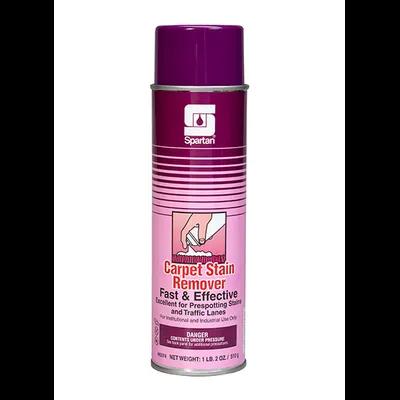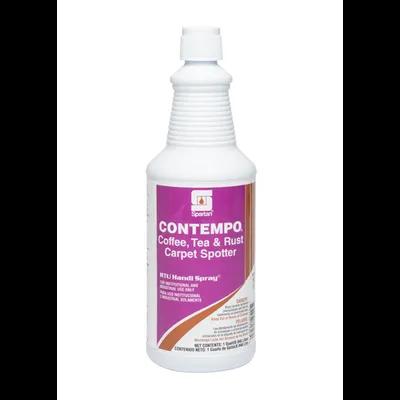Identifying and effectively treating stains in a commercial laundry setting is a critical task that directly impacts the quality of service provided. Commercial laundries cater to a diverse array of clients, including hotels, hospitals, restaurants, and industrial companies, each presenting unique challenges when it comes to stain removal.
For hotels, pristine linens and towels are paramount for guest satisfaction. Hospitals require impeccable cleanliness to maintain hygiene standards and patient safety. Restaurants need spotless uniforms and tablecloths to uphold their image, and industrial companies demand thorough cleaning to handle tough, stubborn stains from machinery and work environments.
Failing to properly identify and treat stains can lead to dissatisfied clients, damaged reputations, and increased operational costs due to re-washing or replacing items. The challenge lies in the variety and complexity of stains encountered daily – from food and beverage spills to blood, grease, and industrial residues.
This article aims to help commercial laundry professionals tackle these issues head-on. We’ll provide expert insights into the most common stains found in different sectors, detailed identification techniques, and effective treatment methods. By equipping you with this knowledge, you can enhance your stain removal processes, ensure superior service quality, and ultimately, retain and grow your client base.
What are the Different Types of Stains? 8 Most Common
The first step in removing stains is understanding the different types of stains. Knowing what type of stain you are dealing with will allow you to choose the right removal process and product.
- Protein-Based Stains
- Tannin-Based Stains
- Oil-Based Stains
- Dye-Based Stains
- Suntan Lotion/Sunscreen Lotion Stains
- Ink and Marker Stains
- Wax and Gum Stains
- Mold and Mildew Stains
- Rust Stains
1. Protein-Based Stains
Examples of Protein-Based Stains:
Protein-based stains, such as blood, sweat, milk, and egg, are among the most common in commercial laundries.
Characteristics of Protein-Based Stains:
These stains tend to adhere strongly to fabric fibers due to their organic composition.
How to Remove Protein-Based Stains:
Effective treatment utilizes enzymatic cleaners that break down the protein molecules, making them easier to remove during the washing process.
2. Tannin-Based Stains
Examples of Tannin-Based Stains:
Tannin-based stains include tea, coffee, wine, and fruit juices.
Characteristics of Tannin-Based Stains:
These stains contain elevated levels of acids and pigments, which can be particularly stubborn.
How to Remove Tannin-Based Stains
Utilizing acid-based cleaning agents can neutralize the tannins, allowing the stains to dissolve more easily. Exceptional care must be taken with delicate fabrics to avoid damage.
3. Oil-Based Stains
Examples of Oil-Based Stains
Oil and grease stains are prevalent in settings like restaurants and automotive services.
Characteristics of Oil-Based Stains:
These stains are hydrophobic and do not dissolve in water.
How to Remove Oil-Based Stains:
Solvent-based cleaners or detergents containing surfactants are highly effective in breaking down oil molecules. Pretreatment is often necessary to ensure complete removal during the wash cycle.
4. Dye-Based Stains
Examples of Dye-Based Stains:
Dye-based stains, originating from substances like ink, cosmetics, and dyes, present unique challenges due to their highly pigmented nature.
Characteristics of Dye-Based Stains:
These stains can be particularly difficult to remove if they set in.
How to Remove Dye-Based Stains:
Oxidizing agents, such as hydrogen peroxide or specialized dye removers, can often be employed to break down the pigment and lift the stain from the fabric.
5. Suntan Lotion/Sunscreen Lotion Stains
In-organic or organic based stains originating from products used with suntan lotions or sunscreens.
Characteristics of Sunscreen Stains:
Typically seen as a yellow to brown stain.
How to Remove Sunscreen Stains:
Using a lower pH high detergent wash step is important. A sour flush (lower pH) for extreme stains can be used. Remember to much sour can damage linen. Raise the pH after a sour flush with a fresh rinse before adding alkali and detergent.
6. Ink and Marker Stains
Examples of Ink Stains:
Ballpoint pen ink and permanent markers are the most common ink stains.
Characteristics of Ink Stains:
Highly pigmented and often penetrate deeply into fabrics.
How to Remove Ink Stains:
Use alcohol-based solutions or commercial ink removers; may require multiple applications.
7. Wax and Gum Stains
Examples of Wax and Gum Stains:
Candle wax and chewing gum are the most common stains in this group.
Characteristics of Wax and Gum Stains:
Solid and often embedded in the fabric fibers.
How to Remove Wax and Gum Stains:
Freeze and scrape off excess wax or gum, then treat with solvent-based cleaners to remove residue.
8. Mold and Mildew Stains
Examples of Mold and Mildew Stains:
Mold and mildew are prevalent in fabrics stored improperly. Materials should never be stored damp
Characteristics of Mold and Mildew Stains:
Musty smell and dark spots.
How to Remove Mold and Mildew Stains:
Wash with a solution containing bleach (if fabric-safe) or use specialized mildew removers; ensure thorough drying to prevent recurrence.
9. Rust Stains
Examples of Rust Stains:
Rust stains can appear from hard water, high levels of iron in the water, and contact with metal equipment.
Characteristics of Rust Stains:
Rust stains typically appear as reddish-brown or orange-brown marks on the fabric. The intensity of the color can vary depending on the amount of rust and the fabric type.
These stains often have irregular, spotty patterns and can range from small specks to larger patches. The shape may reflect the source, such as the outline of a rusted object or drips from rusty water.
How to Remove Rust Stains:
Use a rust pre-spotter or a rust-reclaim powder.
How to Verify the Stain
Now that you are familiar with the nine most common types of stains, you may be wondering how you test to make sure you have identified it correctly.
There are three main ways to verify the stain:
- Visual Inspection
- Chemical Testing
- Fabric Analysis
1. Visual Inspection
Visual inspection is the most immediate method of stain identification.

Characteristics such as color, texture, and location on the fabric can provide valuable clues. For example, yellowish stains on bedding or table linens might suggest bodily fluids, whereas dark, oily stains found on kitchen uniforms are grease or oil.
If you or your staff are certain of the stain, no more verification is needed.
2. Chemical Testing
In some settings, chemical testing kits are used for precise stain identification and to ensure the right removal product is used.
These kits can be helpful if you are not sure of the stain you are dealing with. This method is particularly useful for complex or unidentified stains.
These kits can include a variety of reagents that react with specific stain components, aiding in the rapid and accurate identification of the staining agents.
3. Fabric Analysis
Always consider the fabric or material during stain removal processes.
Understanding the type of fabric is also crucial in stain identification and treatment. Different fabrics have varying susceptibilities to damage from cleaning agents. For example, silk and wool are more delicate and require gentler treatment compared to cotton or polyester.
Knowing the fabric type aids in choosing the appropriate cleaning agents and methods.
Best Practices for Treating Stains
Now that you have identified the stain, confirmed its makeup, and selected the right product and process to remove it, it’s time to get to work. Use these best practices to ensure seamless removal.
Take Immediate Action
Treatment as soon as possible increases the likelihood of successful stain removal. Fresh stains are easier to treat than those that have set in.
Double-Check Cleaning Agent Selection
The selection of the right cleaning agent is paramount.
Enzymatic cleaners for protein stains, acid-based cleaners for tannins, solvent-based cleaners for oils, and oxidizing agents for dye-based stains should be used as determined by the stain type.
Using the wrong agent can not only fail to remove the stain but may also damage the fabric.
Moderate Temperature
Temperature plays a significant role in stain removal.

Heat can set some stains, making them harder to remove, while others require warm or hot water for effective treatment.
It is essential to know the ideal temperature settings for distinct types of stains to achieve optimal results.
Keep in mind a warm water flush as an initial step in the wash process can assist in eliminating some protein-based stains.
Properly Rinse and Dry the Affected Area
Proper rinsing ensures that all cleaning agents are thoroughly removed from the fabric, preventing any residual chemicals from causing future damage or discoloration.
Similarly, drying techniques should be chosen based on the fabric type and the nature of the stain to avoid setting any residual stain particles.
Final Thoughts
Identifying and treating stains in a commercial laundry setting requires a comprehensive understanding of the various types of stains, the science behind their identification, and the most effective treatment practices. Each type of stain presents unique challenges, but with a systematic approach and the use of appropriate cleaning agents, commercial laundries can achieve exceptional results.
By mastering these techniques, you can ensure high standards of cleanliness, enhance the longevity of fabrics, and significantly improve customer satisfaction. Investing in proper stain removal processes not only upholds the quality of service but also strengthens your reputation in a competitive market.
At Imperial Dade, we stock hundreds of stain removal products, including Spartan’s Carpet Care Line, to help you tackle even the toughest stains. Contact us to find the perfect solutions for your commercial laundry needs.




